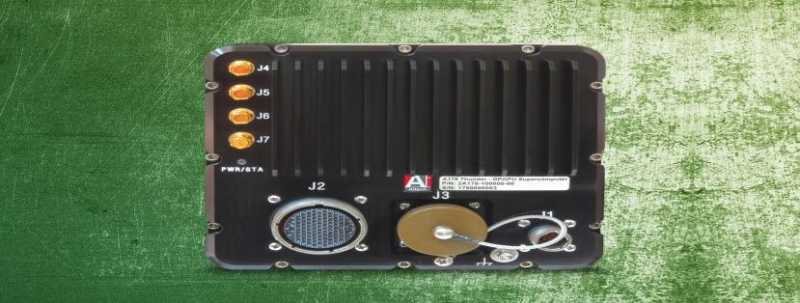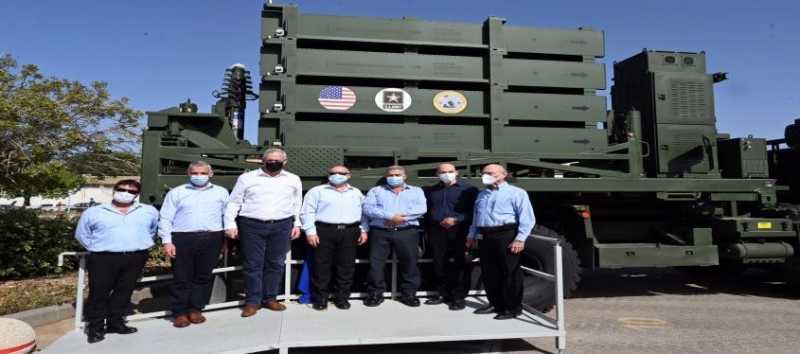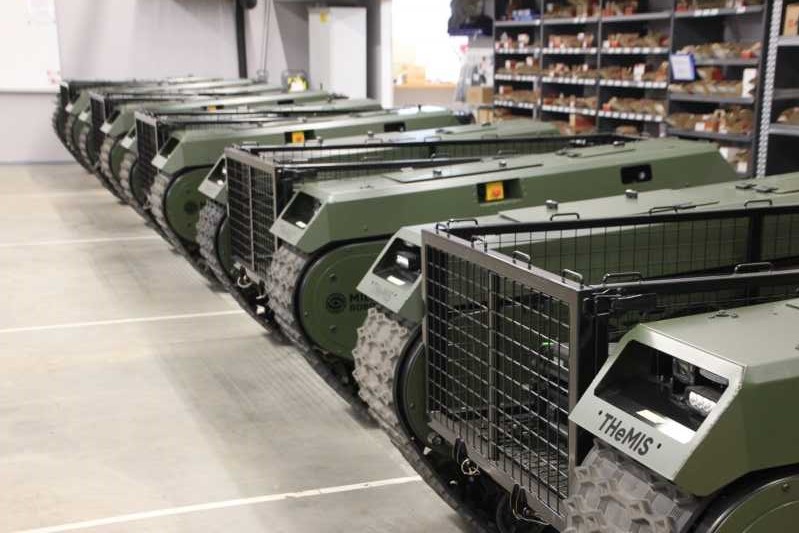 Committed to bringing the latest in cutting-edge drone technology and unmanned systems to the region and beyond, ADASI is at the forefront of innovation in autonomous capabilities and augmenting its product portfolio. They are open to expanding into South Asia and Africa when the right opportunity arises, says Ali Al Yafei, Chief Executive Officer, ADASI, in an interview. Excerpts:
Committed to bringing the latest in cutting-edge drone technology and unmanned systems to the region and beyond, ADASI is at the forefront of innovation in autonomous capabilities and augmenting its product portfolio. They are open to expanding into South Asia and Africa when the right opportunity arises, says Ali Al Yafei, Chief Executive Officer, ADASI, in an interview. Excerpts:
The first fully UAE-made high-performance vertical take-off and landing drone Garmoosha is a next-generation light unmanned aircraft system designed to perform across a diverse range of missions to meet defence and security force requirements, including intelligence, surveillance, and reconnaissance. It is used to detect gas pipeline leaks, survey infrastructure, and conduct search and rescue operations as well.
 Ali Al Yafei
Ali Al Yafei
Chief Executive Officer, ADASI
Since joining in 2008, Ali has spearheaded significant growth and development of ADASI to enhance the UAE’s national security infrastructure, and to address the nation’s technological aspirations. Ali Al Yafei provides strategic oversight and business direction for the company, to ensure operational and productive efficiency in delivering complex programs for the UAE Armed Forces.
Countries all over the world are pushing for unmanned systems as the most important part of their defence strategy. How challenging is the unmanned systems industry today, and what makes ADASI a distinct player in the global arena?
UAVs are rapidly advancing in terms of capability and are growing in popularity, with an increasing number of uses across the military, commercial, scientific, recreational, agricultural, and other sectors. Drones have become critical to organisations and industries, increasing efficiencies, improving accuracy, and resolving security issues across borders. Their ability to reach the most remote areas with little manpower required saves time, energy, and cost.
The UAE drone market is expected to grow, driven by the rising demand for military and commercial drones, coupled with the proactive involvement of regulatory bodies, such as General Civil Aviation Authority (GCAA) and Dubai Civil Aviation Authority (DCAA), in devising policies to support the use of drones in different applications.
When it comes to UAVs and autonomous capabilities, ADASI is at the forefront of innovation and the upcoming launches at IDEX testifies this. With the future increasingly relying on unmanned systems that provide a higher degree of tactical flexibility, we have invested extensively to fast-track R&D investments in these domains, bringing related products to market with speed.
Incorporating the latest technologies, we focus on the acquisition, development, test, operation, and full-service support of UAV systems. We also modify and reconfigure performance to suit our partner’s strategic and tactical demands or to integrate alternative payloads.
There are currently no platform systems like our Garmoosha drone in the UAE, which enables us to position ourselves on the leading edge of tomorrow. Our main competitors are based in China, USA, and Europe.
Could you give us an overview of the products and services offered by ADASI? Who are its major clients globally?
We have designed and manufactured the RW-24 system, a fully automated and highly effective high-speed UAV with significant offensive capabilities that operates from shallow to near-vertical angles and boasts a long mission endurance.
We also have more than 10 years of experience in operating and providing after-sales support for the Al SabrS-100 vertical take-off and landing (VTOL) systems– developing skills, training pilots, and deploying the UAVs in day-to-day operations, from systems and payload integration to maintenance and logistics. Today, our support is critical to keeping the Al Sabr UAVs in the air for over 5,000 hours a year.
Our Aerostat UAV is an advanced high-endurance airborne monitoring system that can carry an electro-optical/infrared (EO/IR) sensor, such as theFLIR U8500 or the WESCAM MX-10, to heights of up to 3,000 feet, and can stay deployed for over a week at a time, subject to local weather conditions.
Our GCS 300 shelter is the ideal base for transporting, storing, operating, and maintaining UAVs in the field. Robust, resilient, and designed to operate in extreme temperatures, it can be transported by road, rail, sea, and air – including by C-130 and C-17 aircraft. On the ground, it expands into a full 6.1m x 5.8m technical and control hub with all the infrastructure and equipment needed for frontline drone operations.
Launched in February 2020, the Garmoosha drone is the first fully UAE-made high-performance vertical take-off and landing (VTOL) drone that is used to detect gas pipeline leaks, survey infrastructure, and conduct search and rescue operations.
The newest feather in our cap will finally be announced at IDEX. We are extremely proud to be expanding our product portfolio and remain committed to bringing the latest in cutting-edge drone technology and unmanned systems to the region and beyond.
While our primary customer is the General Headquarters (GHQ) of the UAE Armed Forces, we are working towards offering our products and services in other markets.
Tell us more about the Garmoosha drone. What makes the UAV an important asset?
The Garmoosha is a next-generation light unmanned aircraft system (UAS) designed to carry payloads up to 100kg. The platform has an endurance of six hours – equivalent to a range of 150km – and can perform across a diverse range of missions to meet defence and security force requirements, including intelligence, surveillance, and reconnaissance (ISR). It is deployable in all weather and light conditions, and at altitudes ranging from sea level to 10,000 feet.The aircraft’s payload capacity and performance specifications give it wide functionality, making it an ideal platform for electronic warfare missions, radio link range extension and retransmission, maritime surveillance, monitoring, as well as search and rescue operations.
The Garmoosha meets market needs by enhancing air operations, and supporting various applications such as law enforcement, search and rescue, surveying, and securing borders. Its advanced capabilities, including an integrated high-definition camera and electro-optical sensor for day and night ISR collection, provide operational flexibility that allows militaries to save manned helicopters from critical missions.
Is ADASI considering expansion into the South Asian and African markets?
One of the main focuses of our parent company, EDGE Group, is to develop the country’s export potential in response to international demands. With an operating model that focuses on building collaborative opportunities, we work with our partners to serve our shared interests wherever it makes business sense to do so, therefore we are open to expanding into South Asia and Africa when the right opportunity arises.
What are your visions and priorities for the company over the next decade? What is the roadmap ahead?
We have several product launches in the pipeline that are set to bolster ADASI’s position as a regional leader in autonomous systems. In the long term, we aim to focus on the development of our core activities and strengthening the technological capabilities of our customers. We will continue to innovate, integrate, evolve, and develop our own unique intellectual property (IP) as we prepare for an increasingly autonomous tomorrow.






